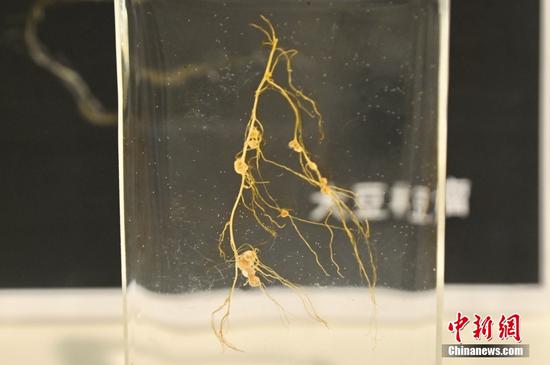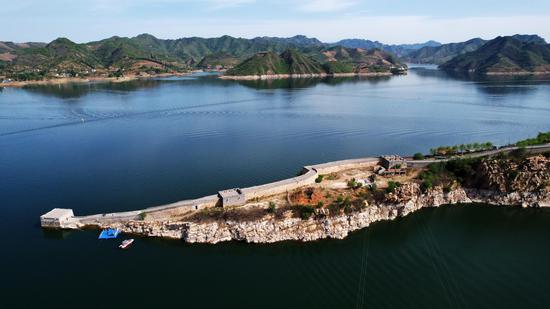
A pumping station on the eastern route of the South-to-North Water Diversion Project in Sihong, Jiangsu province on Friday. (FANG DONGXU/FOR CHINA DAILY)
China's mega water diversion project, which channels water from the Yangtze River Basin to the drought-prone north, has diverted over 62 billion cubic meters of water, according to the China South-to-North Water Diversion Corporation.
The South-to-North Water Diversion Project has benefited more than 150 million people, the corporation said in a media release on Sunday, and now supplies 75 percent of the water used in Beijing, and 99 percent of the water used in Tianjin.
The project follows three routes: eastern, middle and western. The middle route, which starts at the Danjiangkou Reservoir in Hubei province and runs across Henan and Hebei provinces before reaching Beijing and Tianjin, started operation on Dec 12, 2014.
The eastern route transfers water from Jiangsu province to areas including Tianjin and Shandong province. Its first phase, which serves Jiangsu and Shandong provinces, went into operation in November 2013.
The western route is still in the planning stage.
The corporation stressed the role of the project in supporting economic development and promoting environmental improvement.
Since the middle and eastern routes were commissioned, they have helped support GDP growth of almost 10 trillion yuan ($1.4 trillion), it said. The project's enhancement of water capacity has enabled many areas along its routes to develop new towns and industrial parks.
For example, local authorities in Zhengzhou, capital of Henan, were able to persuade digital products manufacturer Foxconn to build a plant in the city in 2010, as a result of the promised sufficiency of water supplied by the middle route.
The release stated that to date, the middle route has supplied over 100 million cubic meters of water for domestic and industrial use in the Xiong'an New Area.
In total, the project has added almost 10 billion cubic meters to water bodies in North China, helping reverse the decline in groundwater levels, which started in the 1970s.
Baiyangdian Lake, the largest wetland ecosystem in northern China, dried up for five straight years between 1984 and 1989. Thanks to supplementary water provided by the middle route since 2018, however, the lake has expanded from 171 square kilometers to 275 sq km.
"The wetland that is regarded as the 'pearl of North China' has gradually resumed its former vitality," the release stated.


















































 京公网安备 11010202009201号
京公网安备 11010202009201号